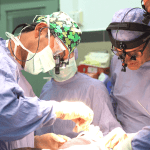Cleft Hospital Pakistan stands as a premier institution providing comprehensive care for individuals with Cleft Lip and Cleft Palate. Our mission is centered on enhancing the quality of life for infants, children, and adults affected by Cleft Lip and Palate or Craniofacial Conditions.

We Specialize In
Cleft Speech Therapy
Tailored Solutions for Unique Voices – Your Partner in Cleft Speech and Language Transformation
Cleft Pediatrics
Caring for Clefts, Caring for Families: Uniting Expertise and Compassion in Pediatrics.
In the Loving Memory of Khawaja Muhammad Aslam Sb
Visit Cleft Hospital
Cleft Hospital Pakistan is a world class facility for complete treatment of Cleft Lip and Cleft Palate Patients. Cleft Hospital is a Non-Profit Organization Dedicated to Improve the Quality of Life of Infants, Children and Adults with Cleft Lip and Palate or Craniofacial Conditions.
Events
30000 ``+``
Cleft Surgeries
54
International Campaigns
Key Figures

Dr Ali Adil
Medical Director
Dr. Ijaz Bashir
ChairmanQualified Doctors

Professor Abdul Rasheed Gatrad OBE
Patron Cleft Hospital
Dr. Muhammad Riaz
Consultant Plastic, Reconstructive & Aesthetic Surgeon
Dr. Chris Hill
Consultant Plastic & Reconstructive Surgeon
Dr. Chriss Theopold
Consultant Plastic & Reconstructive Surgeon












